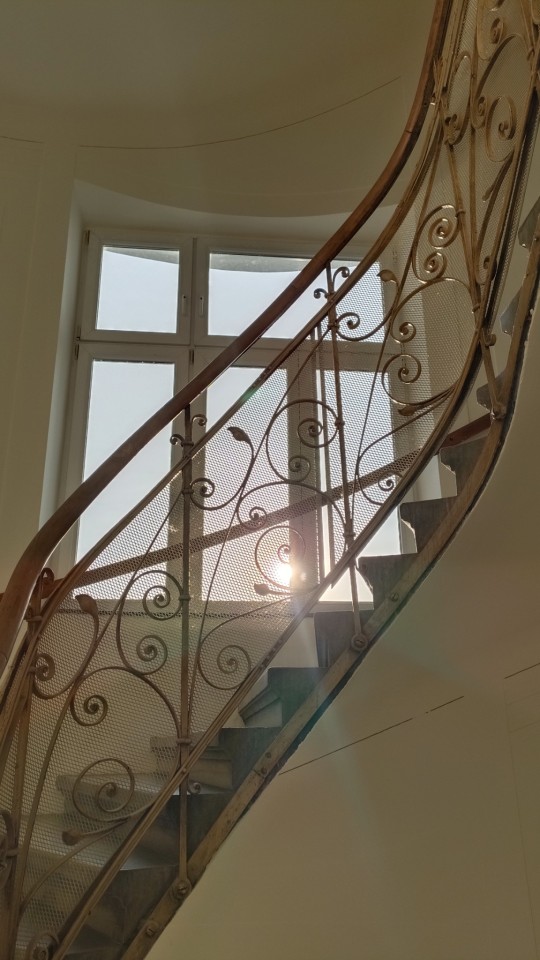#stairways of vienna
Text
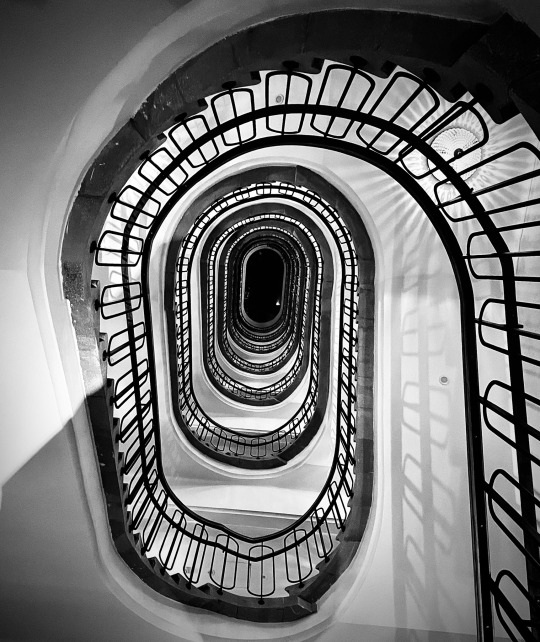
Vienna - all the way up …..
#canon#original photographers#photographers on tumblr#original photography#photography#black and white#black and white photography#austria#vienna#staircase#architecture#stairs#stairway to heaven#hotel
391 notes
·
View notes
Text

Softness, 2024
#photographers on tumblr#original photographers#original photography#fujix100v#x100v#vienna#stairway to heaven#softness
21 notes
·
View notes
Text

creator of this josh lyman spotify playlist, your brain is so large...
#the west wing#josh lyman#tiny dancer florence and the machine cover... vienna... stairway to heaven live heart cover....#it's so right and so good
14 notes
·
View notes
Text

#street photography#street#street art#vienna#wien#city life#city scene#city photography#stairway#shadow#sun light#shades
9 notes
·
View notes
Text

7 notes
·
View notes
Text
youtube
5 notes
·
View notes
Text

if somehow the lord gave me a second chance at that moment, i would do it all over again
i. through the valley - ashley johnson, chris rondinella || ii. simple man - lyndyrd skynyrd || iii. the last of us (goodnight) - gustavo santaolalla || iv. future days - pearl jam || v. the last of us - gustavo santaolalla || vi. alive - pearl jam || vii. hand me, oh hang me - oscar isaac, punch brothers, the secret sisters || viii. house of the rising sun - the animals || ix. hellfire - barns courtney || x. hell broke luce - tom waits || xi. landslide - fleetwood mac || xii. wish you were here - pink floyd || xiii. long long time - linda ronstadt || xiv. alone and forsaken - hank williams || xv. hurt - johnny cash || xvi. while my guitar gently weeps - the beatles || xvii. power over me (acoustic) - dermot kennedy || xviii. losing my religion - shawn james || xix. stairway to heaven - led zeppelin || xx. never let me down again - jessica mazin || xxi. going to california - led zeppelin || xxii. the last of us (never again) - gustavo santaolalla || xxiii. arsonist's lullabye - hozier || xxiv. future days - troy baker || xxv. vienna - billy joel || xxvi. black - pearl jam || xxvii. helpless hoping - crosby, still & nash || xxviii. we'll meet again - johnny cash || xxix. wayfaring stranger - ashley johnson, troy baker
#fell into last of us brain rot last week and made this#i also added him to my multimuse#the last of us#tlou#joel miller#the last of us rp#tlou rp#gif made by alieneen
10 notes
·
View notes
Text
lmao we're working on the next chapter after a short break and i just LOVE writing Sad Benji, it gives me life, here is a morsel
Glancing back down the car, Benji saw a man watching him. He was seated a few rows back from where Benji had been and was using his phone with a stylus between his fingers. With his weight resting on his elbow on the armrest, he had a unimpeded view of the open space running down the middle of the car.
His eyes were not on his phone. They were on Benji as he shut the door behind himself.
Maybe he was just a fellow passenger whose gaze was drawn by movement.
But Benji had a pretty solid track record on figuring out if he was being tailed, and he was supposed to stay out of trouble.
Ethan, there's a guy on the train who might be doing sudoku but he also might be planning to kill me and incinerate my body in the engine. Stop being in Morocco please.
Walking through the next car, Benji surfaced a knit hat out of one of the zips of his bag, pulling it on to cover his hair. This was fine. He was forty-six years old, he'd dodged the police in his ill-spent youth and he'd ducked secret agents as a fun little hobby for nineteen years and change. Benji was perfectly capable of taking care of himself.
Without his permission, Benji remembered Ethan standing in a flat outside of Vienna in his boxers and bruises, voice pitched low like he was telling a state secret: What if I'd rather look after you?
Finding the closest open seat next to the exit stairway, Benji dropped himself into a chair, his bag resting on his lap.
It was probably nothing. He was fine. No one looked after Benji Dunn, and that was fine.
22 notes
·
View notes
Text

Gustav Klimt’s tribute to Italian art, on a spandrel of the stairway at Kunsthistorisches Museum, Vienna 1891, (photo: Zwickelbild)
32 notes
·
View notes
Text
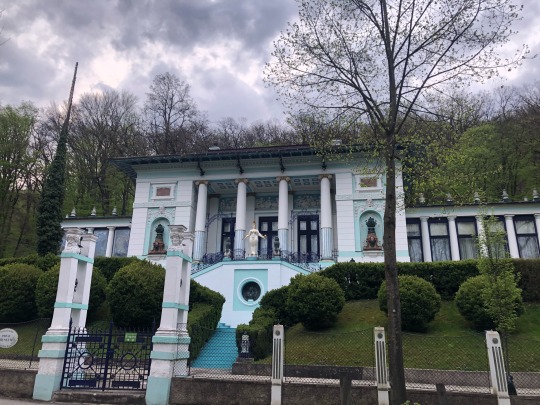



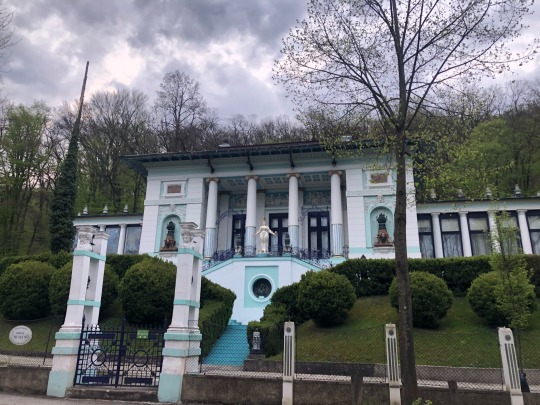

Otto Wagner Villa, 1140 vienna Austria 🇦🇹
Otto Koloman Wagner (German: [ˈɔto ˈkoːloman ˈvaːɡnɐ] (listen); 13 July 1841 – 11 April 1918) was an Austrian architect, furniture designer and urban planner. He was a leading member of the Vienna Secession movement of architecture, founded in 1897, and the broader Art Nouveau movement. Many of his works are found in his native city of Vienna, and illustrate the rapid evolution of architecture during the period. His early works were inspired by classical architecture. By mid-1890s, he had already designed several buildings in what became known as the Vienna Secession style. Beginning in 1898, with his designs of Vienna Metro stations, his style became floral and Art Nouveau, with decoration by Koloman Moser. His later works, 1906 until his death in 1918, had geometric forms and minimal ornament, clearly expressing their function. They are considered predecessors to modern architecture.
The Second Wagner Villa (1912)
Another of his last projects was the Second Wagner Villa on Hüttelbergstrasse in Vienna. It was located near to, and in sight of, his first villa, which he had sold in 1911. It was considerably smaller than his earlier villa. The building was designed to be extremely simple and functional, with a maximum of light, and a maximum use of new materials, including reinforced concrete, asphalt, glass mosaics, and aluminum. The villa is in the form of a cube, with white plaster walls. The primary decoration elements of the exterior are bands of blue glass tile in geometric patterns. The front door is reached by a monumental stairway to the first floor. The servant's quarters were downstairs, and the main floor was occupied by a large single room, which served as a salon or dining room. For the furniture, he selected many works designed and manufactured by one of his former students, Marcel Kammerer. Wagner intended the house as the main residence of his wife after his death, but she died before him, and he sold the house in September 1916
Wagner died on April 11. 1918, shortly before the end of the First World War, in his apartment on Döblergasse in Vienna.
#Travelingwithoutmoving
#architecture #architecturephotography #architecturelovers #architectureporn #architecturedesign #architecturelover #architecturephoto #architecturedaily #architecture_hunter #architecturedetail #architecturephotos #architecturedose #architectureanddesign #architecturelife #architecturegram #architecturelove #architecturephotograpy #architectures #architectureinspiration #architecture_view #architektur @-Susan @darksilenceinsuburbiareloaded @shadowanndeath @dakota-283 @frenchpsychiatrymuderedmycnut @bko69er @derflaneur @boanerges20 #architekturfotografie #architekturfotograf #architektur_erleben #architekturliebe #architekturporn #architekturelovers
Soundtrack: 2000 Elefanten by Die Wilde Jagd
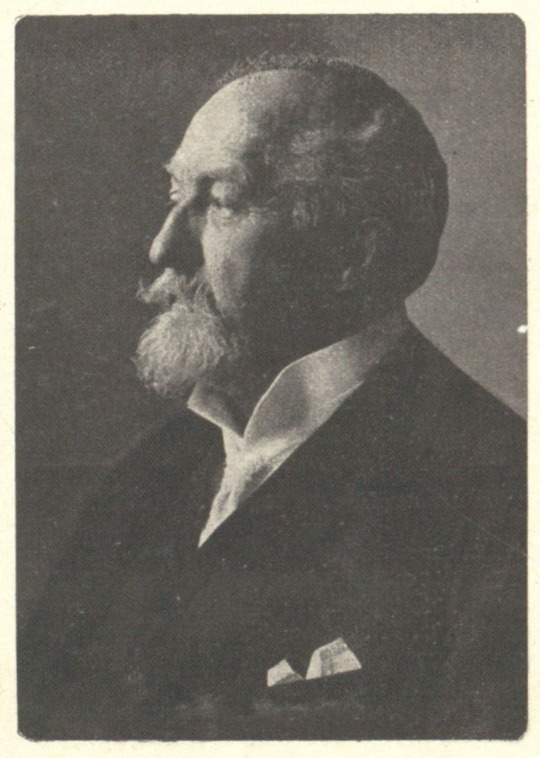
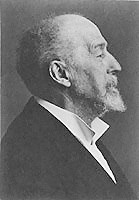
#x-heesy#my art#iphonography#4/2023#🇦🇹#austria#vienna#wien#1140#architecture#architektur#traveling#travelingwithoutmoving#Villa#otto wagner#jugendstil#art decò#art nuveau#we Need magic#Pavillon#nostalgia#take me there for one day#fucking favorite#music and art#photographer#artist profile#we Need Kitsch#wikipedia#classic aesthetic
66 notes
·
View notes
Text
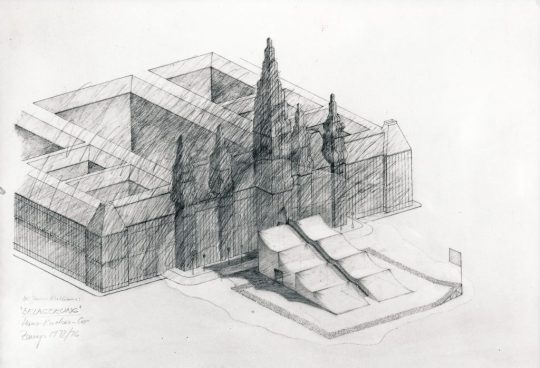

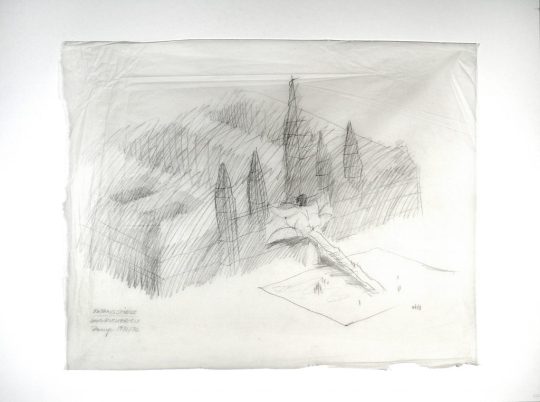
Belagerung / Stairway to the city hall
Vienna, Austria
1972–1976
Haus-Rucker-Co (1967–1992)
#haus-rucker-co#vienna#austria#architecture#europe#1970s#20th century#leisure#outdoors#state#building on the built#pavilions#temporary architecture#public spaces
5 notes
·
View notes
Text
Trustees System Service Building - Part 2
Address: 201 N. Wells St.
Year Built: 1929 - 1930
Architects/designers: Thielbard & Fugard, Edgar Miller, Eugene and Gwen Lux

Trustees System Service Building

Trustees System Service Building, Chicago, Illinois, Presentation Drawing, 1930. Artist: Thielbar and Fugard (American, 20th Cent.)
Elizabeth Hyde Holden (American, Unknown). Art Institute of Chicago

Trustees System Service Building, top stories, June 2, 1930. Creator: Hedrich-Blessing. Chicago History Museum.
The building:
The Trustees System Service Building (now known as Century Tower) is a striking art deco skyscraper rising at the corner of Lake and Wells Streets, in downtown Chicago. Designed in 1929 by the architectural firm of Thielbar & Fugard, the building was completed in 1930. Elevated tracks round the southwest corner of the building as CTA trains enter the Loop from the North and West Sides, making its second-story relief sculptures easily viewable by train passengers.
Of 28 stories, the building consists of a 20-story base topped by an eight-story set-back tower and a ziggurat (stepped pyramid). Its design conformed to a 1923 local zoning ordinance which not only allowed for taller buildings of over 264 feet, but only through the use of set-back towers that covered only 25 percent of the building lot.
At the time of its completion, it was the tallest reinforced concrete building in the world. Its original tenant and namesake was the Trustees System Service, a bank founded in 1914 by businessman John Charles Corcoran that specialized in consumer loans, capitalized by wage earners in the American Midwestern cities in which it operated. The building had a long list of various countries' consulates as tenants. The bank collapsed some years later, and a receiver was appointed in late October 1932. It was held bankrupt in January 1934.
The building’s first twenty stories were constructed of concrete slabs and columns reinforced with cast-iron cores and helical bars, while the set-back tower was framed in steel. The first four floors are faced in pale gold limestone while upper floors are clad with various colors of brick that graduate in color from rust red on the building's lower floors to lighter yellow on the building’s tower. It was thought that this gave the impression of greater height. [Chicago Landmark Commission]
The original banking entrance on Lake Street rises two stories, and to the right a secondary entrance leads to the business building and the elevator banks (now the entrance to the Century Tower residences). Exterior relief sculptures by Eugene and Gwen Lux frame the doorway and decorate upper floors of the building.
Inside, all is colorful rare marble and further sculptural ornament, including pilaster capitals and gold relief medallions framing the original banking stairway. The banking entrance doors are set below a grid of glass panels that rises to the top of the two-story surround, consisting of a cut-lead grillwork sandwiched between glass. Designed by Chicago artist Edgar Miller, the lead grillwork contains human figures representing the many trades of man through history, including mining, farming, and logging, set within lace-like geometry.
The banking lobby itself is 25 feet in height and finely detailed with various marbles, including a Travertine floor detailed with black Belgian marble and a sixteen-foot-wide marble staircase that originally led to the second-floor banking hall. The walls of the staircase are clad with red Numidian marble matching that used for the office lobby walls.
Eugene and Gwen Lux, husband and wife, designed the low-relief sculptural panels that ornament the Trustees System Service Building. Eugene Van Breeman Lux was born in Hungary in 1900 and received training as a sculptor at fine arts academies in Paris, Vienna, and Munich. Among his teachers were the French sculptor Bourdelle and the Yugoslav artist Ivan Mestrovic, who created the Native American statues in Chicago's Congress Plaza. Along with the low-relief sculptures ornamenting Chicago’s McGraw-Hill Building (created with his wife Gwen), the sculptural panels for the Trustees System Service Building are his best-known artistic works; after their completion, Eugene Lux entered the newly developing field of industrial design.
Gwen Lux (1908-1986) had a long career as an artist... Later commissions by Gwen Lux include an aluminum sculpture of Eve commissioned by the Radio City Music Hall in New York and installed in 1933.
Edgar Miller (1899-1993) designed the cut-lead decorative grilles that ornament the transom above the building’s banking lobby street entrance and the large door that separates the banking lobby from the building’s office lobby. One of the country's most versatile artists, he is known for his collaboration on the Carl Street Studios, in Chicago.
Architects Thielbar and Fugard
Thielbar & Fugard, the architects for the Trustees System Service Building, are significant in Chicago architecture as the designers of the McGraw-Hill Building on North Michigan Avenue and as associated architects for the Jewelers Building on East Wacker Drive, both Chicago Landmarks. In addition, John Fugard was the designer, through his earlier firm of Fugard & Knapp, of several luxury apartment buildings on Chicago’s prestigious East Lake Shore Drive (now a Chicago Landmark district) and was associated with the design of the Allerton Hotel on North Michigan Avenue, also a Chicago Landmark. 1
Chicago Landmark Commission

Portraits, Chicago Landmark Commission
The building was illustrated and described in various publications, some of which are shown below.
Scanned pages from The Architectural Forum, vol. LII, no. 1, January 1, 1931, Part One:









Set into the staircase walls are a pair of bronze plaques, also designed by the Luxs. Allegorical in image, one symbolizes “Thrift” with images of an owl (representing wisdom), a beehive (denoting hard work), a prosperous-looking man, and the phrase “Life prospers the thrifty,” while the other, “Thriftlessness,” depicts a shoeless, ragged-looking man surrounded by weed-like thistles and thorns and bears the phrase “Life punishes the thriftless.”
[Commission on Chicago Landmarks]




Additional images from Trustees System Service Building, 201 N. Wells St. Preliminary Landmark recommendation approved by the Commission on Chicago Landmarks, January 9, 2003





This plan of the second floor dates from 1953, and shows the intact configuration of the main banking room (see illstratiions below). The west portion, on the Wells Street side, was apparently occuppied by the architectural offices of Graham, Anderson, Probst, and White.
The building was illustrated in the April 1931, vol. 8 no. 12 issue of Through the Ages, pp. 9-16 [link to pdf of article]. Published by the National Association of Marble Dealers, the publication focuses on the use of marble in the Trustees System Service Building.

Describing the building's entrance:
Through bronze doors, you enter into a spacious lobby of warm, subdued richness, relieved by touches of gold. The wall surfaces are of Red Numidian marble to the ceiling, the floor is of Napoleon Gray, and borders are of Cardiff Green and Travertine Antique. From this lobby seven elevators, all of them of the latest type with full automatic control, serve the patrons. From an adjacent entrance hall (there are entrances conveniently located on both Wells and Lake Streets) a grand staircase of Italian Travertine mounts to the Industrial Finance quarters. The walls of this fine flight are also of Red Numidian, and this same striking material was widely employed for the main banking quarters, which are described later on.
This Red Numidian marble comes from quarries at Oran, in Africa, and it is claimed that there are only a very few buildings in America in which it was used. The quarries were known to have been operated by the Romans, but records show that they were in production even before the Romans. They have found traces where this material was used in Palestine many years before any of it was transported to the Roman Empire. The original quarries (the Romans operated several) have become exhausted, and those which are now being worked are comparatively new, having been opened only ten or twelve years ago. [Through the Ages p. 12]
Further:
"The marble, which is blood red in color, is quarried by hand. No machinery whatever is employed. Often entire families work for months in getting out a single block.
"It is said the Trustees System headquarters, the Carnegie Library in Pittsburgh and the Union Trust Company in Detroit, are the only buildings in America which are fortunate enough to possess this rare relic of old Roman splendor." [Through the Ages p. 14]
The illustrations below come from the same issue of Through the Ages.

Finance Banking Room, second floor
The banking room lobby has a Travertine floor with dots of Belgian Black, but the outer border is of Dark Cedar Tennessee. The banking room is divided by a row of Red Numidian marble pillars supporting a gold decorated ceiling, and the foyer is between the pillars and the east wall. Check desks, benches and cashiers’ cages are all a combination of Black and Gold marble and the African Numidian above referred to. The illustrations herewith portray the splendid effect of these materials. [Through the Ages p. 14]

A detail of the above image, showing the decorative panels of the history of Industrial Finance by Eugene Lux. The third panel appears at top right, depicting the Schulze Delitzch banks .2
The banking room and panels are described:
"Topping the Numidian marble of the east wall,” to quote from a booklet published as a supplement to the Industrial Banker of May, 1930, "is a frieze of sculptured plaques depicting the history of Industrial Finance. These plaques, the work of Eugene Lux, are done in a Neo-Classic style, and tell the story of the rise of this important field of business. The first plaque portrays the Medieval Pawnshop, one of those institutions which made the need for co-operative credit so imperative; the second, depicts the Raiffeisen system; the third, the Schulze-Delitzch banks; and the fourth, a Trustees System Service office. This last plaque is one of the few pieces of sculpturing in this country in which the figures are done in modern dress.” [Through the Ages pp. 14, 16]

The second of Lux's panels, on the east wall of the banking room above a doorway, depicts the Raiffeisen system. 3 The image above is a detail from p. 17 of The Architectural Forum article reproduced above.

Marble bench in the Banking Room
According to the Chicago Landmark Designation Report, "The building was modernized in 1967, at which time the second-floor banking hall was largely stripped of historic details." It is not known what happened to the relief panels and other banking lobby accoutrements.
The building went by several named after Trustees System Service lost control in the 1930s. It was placed on the National Register of Historic Places in 1998. The property was converted from a commercial building to apartments in 2003, and in September 2005 became a condominium and its name changed to Century Tower.
NOTES:
1. The architectural firm of Thielbar & Fugard was founded in 1925. Frederick J. Thielbar (1886-1941), a native of Peoria, Illinois, attended the University of Illinois before going to work for the noted Chicago firm of Holabird & Roche. There, Thielbar served as a superintendent of construction and later as a partner. His most significant work while with Holabird & Roche was the Chicago Temple Building, located at Clark and Washington Streets and constructed in 1923. Thielbar was a member of the Board of Directors of the Methodist Church in Chicago and secured the commission for the building, built by the First Methodist Church to house both church sanctuaries and rental offices. Thielbar was both principal designer and construction supervisor for this work.
John Reed Fugard (1886-1968) was born in Newton, Iowa, and also attended the University of Illinois, receiving a B.S. in architecture in 1910. His early practice was with George A. Knapp in the firm of Fugard & Knapp, and the pair designed several noteworthy luxury apartment and hotel buildings in Chicago during the 1910s and early 1920s, including three of the eight buildings that comprise the East Lake Shore Drive Chicago Landmark District. Fugard & Knapp also designed the Moody Memorial Church on N. Clark St. (1924) and the South Water Market complex on Chicago s Near West Side (1925). They also collaborated with New York architects Murgatroyd and Ogden in the construction of the Allerton Hotel, 701 N. Michigan Ave., built in 1924 and a designated Chicago Landmark.
The firm of Thielbar & Fugard was formed in 1925. Significant buildings designed by the firm include the McGraw-Hill Building , 520 N. Michigan Ave., built in 1929 and a designated Chicago Landmark; the Raphael Hotel at 201 E. Delaware Pl.; the Colonnade apartment building at Main and Hinman in Evanston; the Hall of Religion for the 1933- 34 Century of Progress Exposition; and the Wesley Memorial Hospital (now part of Northwestern Memorial Hospital) in 1941. The firm also collaborated in 1926 with architects Giaver & Dinkelberg on the design of the Jewelers Building at 35 E. Wacker Dr., designated a Chicago Landmark.
Fugard was prominent in civic affairs, taking a special interest in housing issues. He served as a commissioner of the Chicago Housing Authority (CHA) and was a founder and president of the Metropolitan Housing and Planning Council. Thielbar & Fugard also were associated architects on the Ida B. Wells housing project for the CHA, one of the city s early public housing projects in the late 1930s.
Source: Commission on Chicago Landmarks, Preliminary Landmark recommendation, p. 16
2. For information on Franz Hermann Schulze-Delitzsch, see Wikipedia.
3. The Raiffeisen system: [Friedrich Wilhelm] Raiffeisen "...conceived of the idea of cooperative self-help during his tenure as the young mayor of Flammersfeld. He was inspired by observing the suffering of the farmers who were often in the grip of loan sharks. He founded the first cooperative lending bank, in effect the first rural credit union in 1864."
Wikipedia
Links:
Architecture Farm: old chicago skyscraper of the week–trustees system services
Cahan, Richard and Williams, Michael, Edgar Miller and the Handmade Home. CityFiles Press, 2009
Century Tower (Chicago)
chicago.designslinger, Thursday, March 5, 2015, Trustees System Service Building
Divi Logan, Linkedin.com, The Artistic Legacy of Edgar Miller, Gwen Lux and Eugene Lux: The Trustees System Service Building.
Trustees System Service Building, 201 N. Wells St. Preliminary Landmark recommendation approved by the Commission on Chicago Landmarks, January 9, 2003
National Register of Historic Places Registration Report
The Architectural Forum Part 1, January 1931, section of Trustees System Service Building, pp. 59-70
The Architectural Forum: Link to complete January 1 1931 Part 1 issue
Through the Ages, April 1931 , vol. 8 no. 12, pp. 9-16
#architecture#buildings#chicago#art deco#sculpture#history#Trustees System Service#Lux#Edgar Miller#Century Tower#Thielbar#Fugard#marble#banking#skyscraper
1 note
·
View note
Text
MOJO’s Top 100 Epic Rock Tracks:

01 Queen – Bohemian Rhapsody
02 Led Zeppelin – Stairway To Heaven
03 The Rolling Stones – Sympathy For The Devil
04 Pink Floyd – Shine On You Crazy Diamond
05 The Doors – The End
06 Kate Bush – Wuthering Heights
07 The Beatles – A Day In The Life
08 Elvis Presley – An American Trilogy
09 Meat Loaf – Bat Out Of Hell
10 Richard Harris – MacArthur Park
11 The Beach Boys – Heroes And Villains
12 Don McClean – American Pie
13 Ike & Tina Turner – River Deep, Mountain High
14 Derek & The Dominos – Layla
15 Black Sabbath – Black Sabbath
16 David Bowie – Space Oddity
17 U2 – Bullet The Blue Sky
18 ELP – Fanfare For The Common Man
19 John Leyton – Johnny Remember Me
20 Kraftwerk – Autobahn
21 Procul Harum – A Whiter Shade Of Pale
22 Mike Oldfield – Tubular Bells
23 King Crimson – The Court Of The Crimson King
24 Radiohead – Paranoid Android
25 Bruce Springsteen – Jungleland
26 The Shangri-Las – Past, Present And Future
27 The Walker Bros. – The Sun Ain’t Gonna Shine Anymore
28 Yes – The Gates Of Delirium
29 Jethro Tull – Thick As A Brick
30 Prince – Purple Rain
31 Wings – Live And Let Die
32 Lynyrd Skynyrd – Freebird
33 Manic Street Preachers – A Design For Life
34 The Velvet Underground – Sister Ray
35 Frankie Goes To Hollywood – Welcome To The P...
36 Can – Mother Sky
37 Oasis – Champagne Supernova
38 Thin Lizzy – Roisin Dubh (Black Rose) Rock Legend
39 The Darkness – Christmas Time
40 Joy Division – Decades
41 Rush – Xanadu
42 Genesis – Supper’s Ready
43 The Who – Baba O’Reilly
44 Eric Carmen – All By Myself
45 Klaatu – Calling Occupants Of Interplanetary Craft
46 Deep Purple – Child In Time
47 Bauhaus – Bela Lugosi’s Dead
48 Freddie Mercury & Montserrat Caballe – Barcelona
49 Alice Cooper – Halo Of Files
50 Blue Oyster Cult – Don’t Fear The Reaper
51 Guns & Roses – November Rain
52 The Verve – Bitter Sweet Symphony
53 Lou Reed – Street Hassle
54 Ultravox – Vienna
55 The Nice – The Cry Of Eugene
56 Pulp – Common People
57 The Electric Prunes – Holy Are You
58 Nick Cave & The Bad Seeds – The Carny
59 Primal Scream – Higher Than The Sun
60 Scott Walker – Such A Small Love
61 Mountain – Nantucket Sleighride
62 Fairport Convention – Tam Lin
63 The Eagles – Journey Of The Sorcerer
64 Gordon Lightfoot – The Wreck Of Edmund Fitzgerald
65 Rainbow – Stargazer
66 Leonard Cohen – Memories
67 The LA’s – The Looking Glass
68 Supertramp – Fool’s Overture
69 The Monkees – Randy Scouse Git
70 Sonic Youth – Tunic (Song For Karen)
71 The Stone Roses – Breaking Into Heaven
72 Roy Harper – The Lord’s Prayer
74 McAlmont & Butler – Yes
75 The Grateful Dead – Dark Star
76 Klaus Schulze – Friedrich Nietzsche
77 David McWilliams – The Days Of Pearly Spencer
78 Julian Cope – Safesurfer
79 Buffalo Springfield – Broken Arrow
80 Iron Butterfly – In-A-Gadda-Da-Vida
81 Alex Harvey – Isobel Goudie
82 Flowered Up – Weekender
83 David Gates – Suite: Clouds, Rain
84 Fleetwood Mac – The Chain
85 The Bevis Frond – Tangerine Infringement Break
86 Spiritualized – Don’t Just Do Something
87 ELO – Eldorado Overture
88 Spock’s Beard – The Healing Colors Of Sound
89 Iron Maiden – Rime Of The Ancient Mariner
90 Patti Smith – Land
91 Kiss – Odyssey
92 Aphrodite’s Child – The Four Horsemen
93 Metallica – One
94 Dexy’s Midnight Runners – This Is What She’s Like
95 John Miles – Music
96 British Sea Power – Lately
97 Bob Dylan – Hurricane
98 Billy Joel – Scenes From An Italian Restaurant
99 Diamond Head – Am I Evil
100 Damien Rice – Eskimo
1 note
·
View note
Text

#street photography#street#street art#vienna#wien#city life#city scene#city photography#stairway#stairs
11 notes
·
View notes
Text
Ver "Frank Zappa: Stairway to Heaven (Vienna, 1988)" en YouTube
youtube
0 notes

